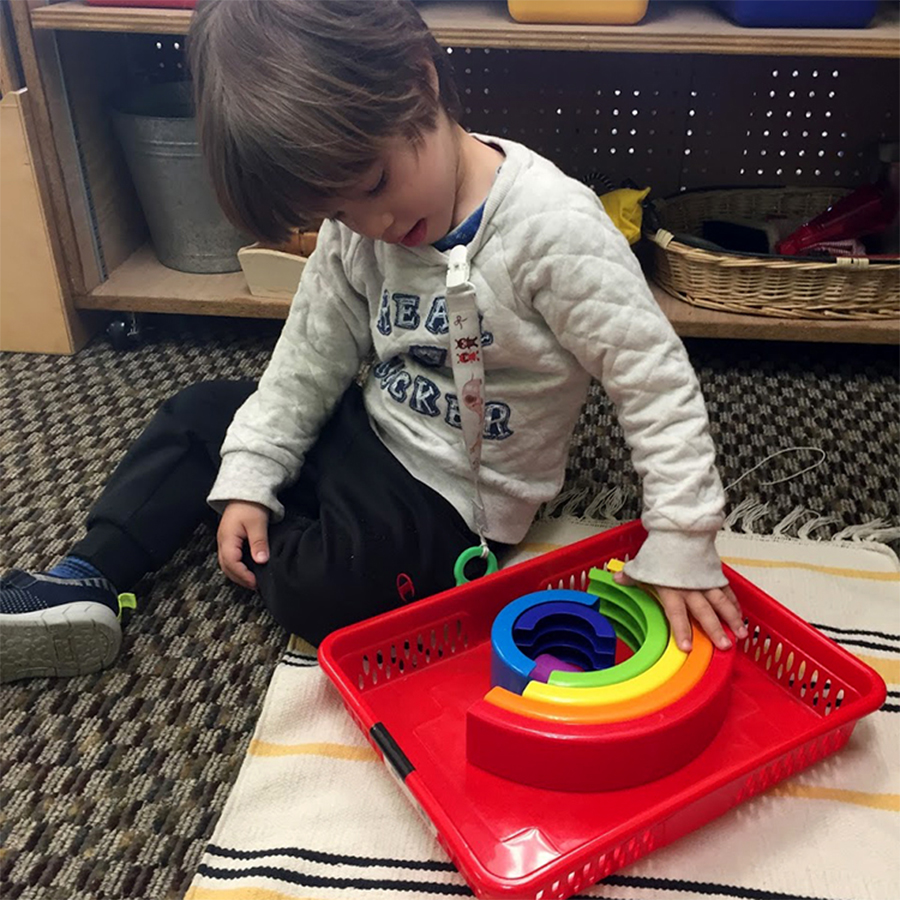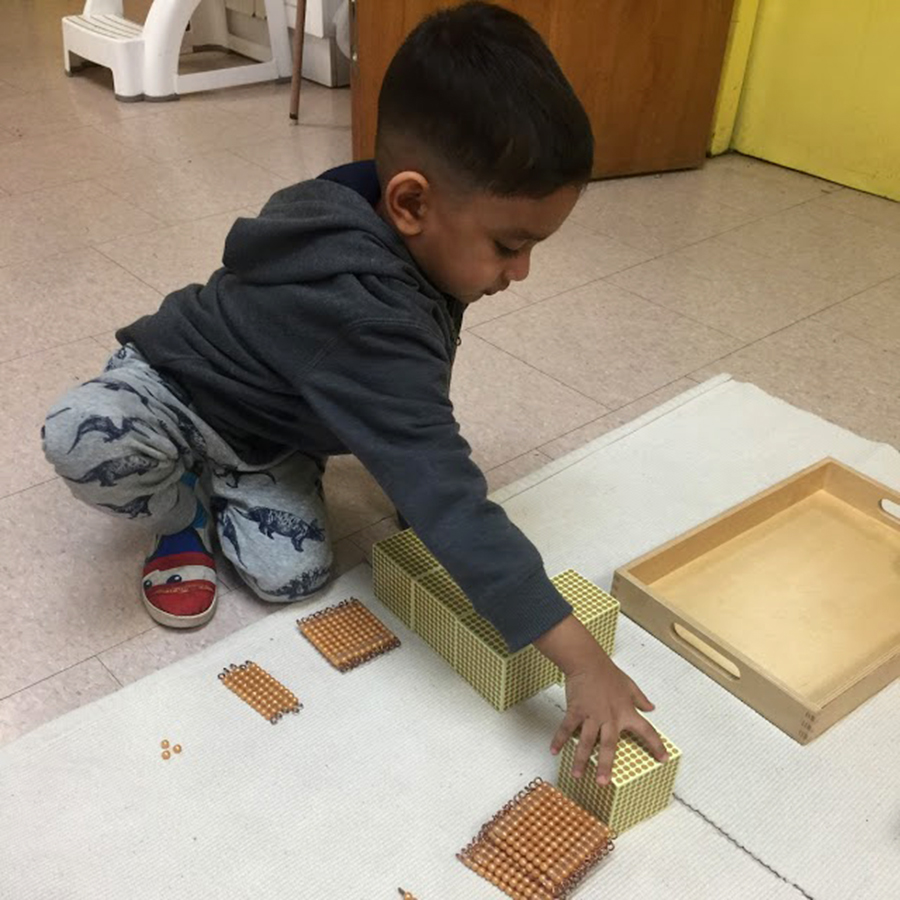The three-hour work period
Under the age of six, there are one or two 3-hour, uninterrupted, work periods each day, not broken up by required group lessons. Older children schedule meetings or study groups with each other the teacher when necessary. Adults and children respect concentration and do not interrupt someone who is busy at a task. Groups form spontaneously or are arranged ahead by special appointment. They almost never take precedence over self-selected work.
Multiage grouping
Children are grouped in mixed ages and abilities in three to six year spans: 0-3, 3-6, 6-12 (sometimes temporarily 6-9 and 9-12), 12-15, 15-18. There is constant interaction, problem solving, child to child teaching, and socialization. Children are challenged according to their ability and never bored. The Montessori middle and high school teacher ideally has taken all three training courses plus graduate work in an academic area or areas.
Work centers
The environment is arranged according to subject area, and children are always free to move around the room instead of staying at desks. There is no limit to how long a child can work with a piece of material. At any one time in a day all subjects — math, language, science, history, geography, art, music, etc., will be being studied, at all levels.
Teaching method - "Teach by teaching, not by correcting"
There are no papers turned back with red marks and corrections. Instead the child’s effort and work is respected as it is. The teacher, through extensive observation and record-keeping, plans individual projects to enable each child to learn what he needs in order to improve.
Basic lessons
The Montessori teacher spends a lot of time during teacher training practicing the many lessons with materials in all areas. She must pass a written and oral exam on these lessons in order to be certified. She is trained to recognize a child’s readiness according to age, ability, and interest in a specific lesson, and is prepared to guide individual progress.









